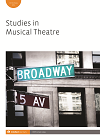
Full text loading...

The 1946 Broadway premiere of Lute Song represents a milestone in reception of the Chinese dramatic tradition in the United States. Despite its yellowface and ‘Oriental pageantry’, it must be situated at the beginnings of a more respectful relationship to China and Chinese people, as the American stage began to move beyond treatments of China dominated by racist vaudeville or fantastical fairy tales. Instead, Lute Song emerged from a classic text, the long drama Pipa ji – even as its own casting and staging inherited some of the same problematic habits of representing Asia. Lute Song, one of several indirect adaptations of Chinese dramas in the American mid-century, represents a milestone as the first Broadway show inspired by American immigrant Chinatown theatre and the first Broadway musical to be based on Chinese classical drama, mediated through European Sinology.

Article metrics loading...

Full text loading...
References


Data & Media loading...

Publication Date:
https://doi.org/10.1386/smt_00031_1 Published content will be available immediately after check-out or when it is released in case of a pre-order. Please make sure to be logged in to see all available purchase options.